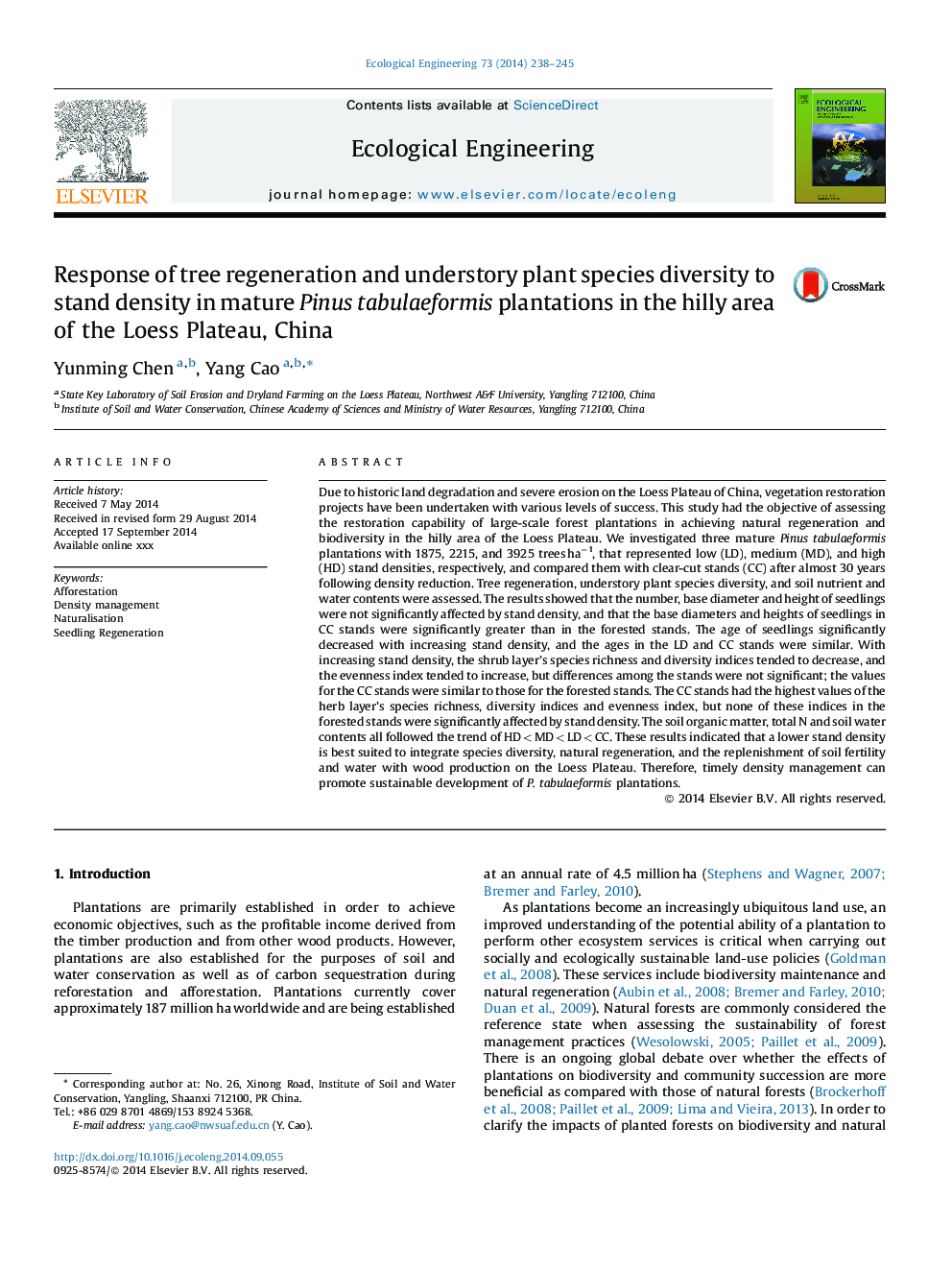| کد مقاله | کد نشریه | سال انتشار | مقاله انگلیسی | نسخه تمام متن |
|---|---|---|---|---|
| 6301902 | 1618026 | 2014 | 8 صفحه PDF | دانلود رایگان |
عنوان انگلیسی مقاله ISI
Response of tree regeneration and understory plant species diversity to stand density in mature Pinus tabulaeformis plantations in the hilly area of the Loess Plateau, China
دانلود مقاله + سفارش ترجمه
دانلود مقاله ISI انگلیسی
رایگان برای ایرانیان
کلمات کلیدی
موضوعات مرتبط
علوم زیستی و بیوفناوری
علوم کشاورزی و بیولوژیک
بوم شناسی، تکامل، رفتار و سامانه شناسی
پیش نمایش صفحه اول مقاله

چکیده انگلیسی
Due to historic land degradation and severe erosion on the Loess Plateau of China, vegetation restoration projects have been undertaken with various levels of success. This study had the objective of assessing the restoration capability of large-scale forest plantations in achieving natural regeneration and biodiversity in the hilly area of the Loess Plateau. We investigated three mature Pinus tabulaeformis plantations with 1875, 2215, and 3925 trees haâ1, that represented low (LD), medium (MD), and high (HD) stand densities, respectively, and compared them with clear-cut stands (CC) after almost 30 years following density reduction. Tree regeneration, understory plant species diversity, and soil nutrient and water contents were assessed. The results showed that the number, base diameter and height of seedlings were not significantly affected by stand density, and that the base diameters and heights of seedlings in CC stands were significantly greater than in the forested stands. The age of seedlings significantly decreased with increasing stand density, and the ages in the LD and CC stands were similar. With increasing stand density, the shrub layer's species richness and diversity indices tended to decrease, and the evenness index tended to increase, but differences among the stands were not significant; the values for the CC stands were similar to those for the forested stands. The CC stands had the highest values of the herb layer's species richness, diversity indices and evenness index, but none of these indices in the forested stands were significantly affected by stand density. The soil organic matter, total N and soil water contents all followed the trend of HD < MD < LD < CC. These results indicated that a lower stand density is best suited to integrate species diversity, natural regeneration, and the replenishment of soil fertility and water with wood production on the Loess Plateau. Therefore, timely density management can promote sustainable development of P. tabulaeformis plantations.
ناشر
Database: Elsevier - ScienceDirect (ساینس دایرکت)
Journal: Ecological Engineering - Volume 73, December 2014, Pages 238-245
Journal: Ecological Engineering - Volume 73, December 2014, Pages 238-245
نویسندگان
Yunming Chen, Yang Cao,